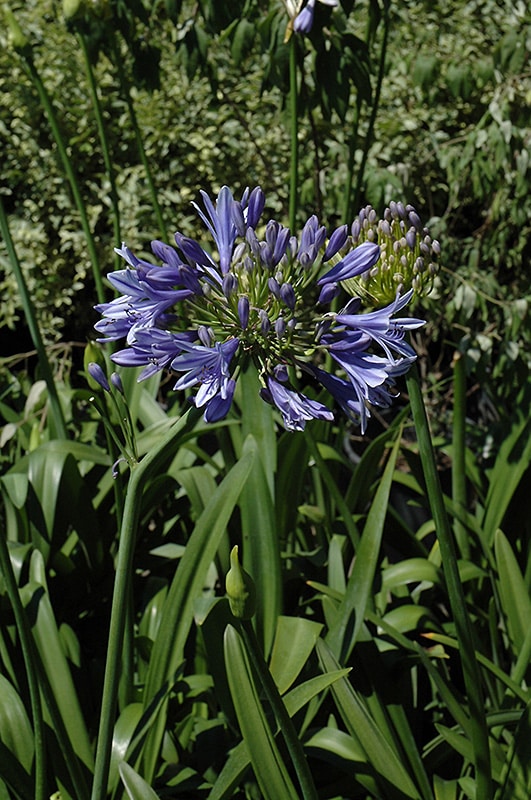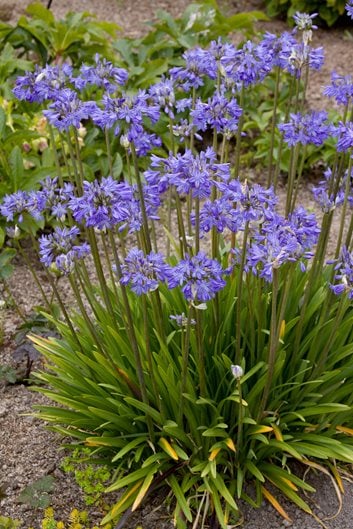Agapanthus Breeding: Tips for Expanding Your Plant Collection
Agapanthus Breeding: Tips for Expanding Your Plant Collection
Blog Article
Releasing the Secret to Effective Agapanthus Cultivation: Idea for a Flourishing Yard
In the world of horticulture, growing agapanthus efficiently calls for a tactical strategy that incorporates numerous elements of plant care. By understanding the subtleties of agapanthus cultivation, one can develop a setting where these plants prosper and bloom abundantly.
Growing Agapanthus: Best Practices
When growing Agapanthus, appropriate dirt prep work is important for guaranteeing effective growth and development of these stunning flowers. Agapanthus, typically called Lily of the Nile or African lily, grows in well-draining dirt with a somewhat acidic to neutral pH level - Agapanthus. Before growing, it is vital to change heavy clay soils with raw material such as garden compost or peat moss to enhance water drainage and provide important nutrients for the plants
To plant Agapanthus, pick a location that receives complete sunlight to partial shade, as this will advertise healthy and balanced growth and plentiful flowering. Dig a hole two times the diameter of the plant's origin round and put the Agapanthus at the same depth it was previously expanding. Delicately backfill the opening with soil, pushing down firmly to eliminate any type of air pockets around the origins.
Water the newly grown Agapanthus thoroughly and remain to keep the dirt evenly moist, specifically throughout the plant's active growing period. Agapanthus. Applying a well balanced fertilizer once a month can additionally sustain the plant's growth and flowering. By complying with these ideal methods for growing Agapanthus, you can develop a magnificent screen of these fascinating flowers in your garden
Perfect Dirt Conditions for Agapanthus
For optimal development and blooming success of Agapanthus plants, making certain the dirt conditions are optimal is essential. Agapanthus favors soil that is abundant in nutrients, so integrating a well balanced plant food during the expanding season can promote healthy and balanced growth and vivid blooms.

Watering and Feeding Tips
To ensure healthy growth and vivid blooms, correct watering and feeding strategies are essential for effective Agapanthus farming. Agapanthus plants gain from routine watering, particularly during the growing period. It is suggested to water deeply as soon as a week, making certain the dirt is damp however not waterlogged. Throughout warm weather or in pots, more frequent watering might be essential to stop the dirt from drying totally.
When it comes to feeding Agapanthus, a balanced plant food with equal parts nitrogen, phosphorus, and potassium can be used in the springtime to promote healthy development and flowering. Slow-release plant foods are suitable for offering nutrients gradually over an extensive duration. Avoid over-fertilizing, as this can lead to too much vegetation growth at the cost of blossoms.
Additionally, integrating organic matter like garden compost into the dirt can boost nutrient levels and enhance soil structure, helping in the overall wellness of the Agapanthus plants. By complying with these watering and fertilizing tips, garden enthusiasts can guarantee their Agapanthus plants flourish and create spectacular display screens of flowers.
Trimming and Deadheading Methods
Proper trimming and deadheading techniques play a vital role in keeping the health and aesthetics of Agapanthus plants, matching the essential techniques of watering and fertilizing for successful farming. Trimming Agapanthus includes getting rid of spent flower heads, dead or yellowing fallen leaves, and overall shaping of the plant to promote much better development. Deadheading, the process of removing faded blossoms, not just enhances the plant's appearance however additionally urges further flowering.
When deadheading Agapanthus, it is suggested to clip off the blossom stem at the base making use of sharp, tidy shears. This procedure reroutes the plant's power from seed manufacturing back into origin and foliage development, promoting a healthier and a lot more durable plant. Normal deadheading can expand the blooming duration of Agapanthus and protect against self-seeding, which can lead to overcrowding.
In terms of pruning, Agapanthus normally advantages from a light trim after blossoming to clean up the plant and urge fresh growth. Reducing the spent blossom stems and eliminating any type of dead or broken foliage helps maintain the plant's vigor and overall look. Nonetheless, it is important to avoid reducing right into the crown of the plant, as this can this link deteriorate its wellness.

Protecting Agapanthus From Vermins and Diseases
Applying reliable insect and condition monitoring methods is essential to safeguarding the wellness and vigor of Agapanthus plants in cultivation. Agapanthus are typically hardy plants, yet they can still succumb numerous insects and illness if not properly looked after. One common parasite that impacts Agapanthus is the Agapanthus borer, a caterpillar that tunnels right into the plant, causing damages to the leaves and blossoms. To avoid invasions, normal assessment of the plants is important. If borers are identified, they can be manually gotten rid of, or insecticidal soap can be utilized as a control action.
In enhancement to parasites, Agapanthus are at risk to conditions such as origin rot and fungal fallen leave places. By remaining cautious and resolving parasite and condition concerns without delay, garden enthusiasts can aid their Agapanthus prosper and grow.

Final Thought
To conclude, effective cultivation of agapanthus calls for appropriate planting strategies, optimal soil problems, sufficient watering and feeding, routine click over here now trimming and deadheading, and security from diseases and bugs. By following these methods and suggestions, garden enthusiasts can guarantee a prospering garden loaded with stunning agapanthus blossoms. Agapanthus. Keep in mind to keep regular treatment and attention to detail to promote the health and wellness and long life of these stunning plants
When planting Agapanthus, appropriate dirt preparation is crucial for guaranteeing effective development and development of these lovely flowers.Water the recently grown Agapanthus thoroughly and continue to maintain the dirt equally moist, especially during the plant's active growing season.For ideal development and blooming success find of Agapanthus plants, guaranteeing the soil problems are suitable is critical. When growing or transplanting Agapanthus, make sure the dirt is well-prepared to provide the required foundation for the plants to develop themselves efficiently. One usual pest that affects Agapanthus is the Agapanthus borer, a caterpillar that tunnels into the plant, triggering damages to the fallen leaves and blossoms.
Report this page